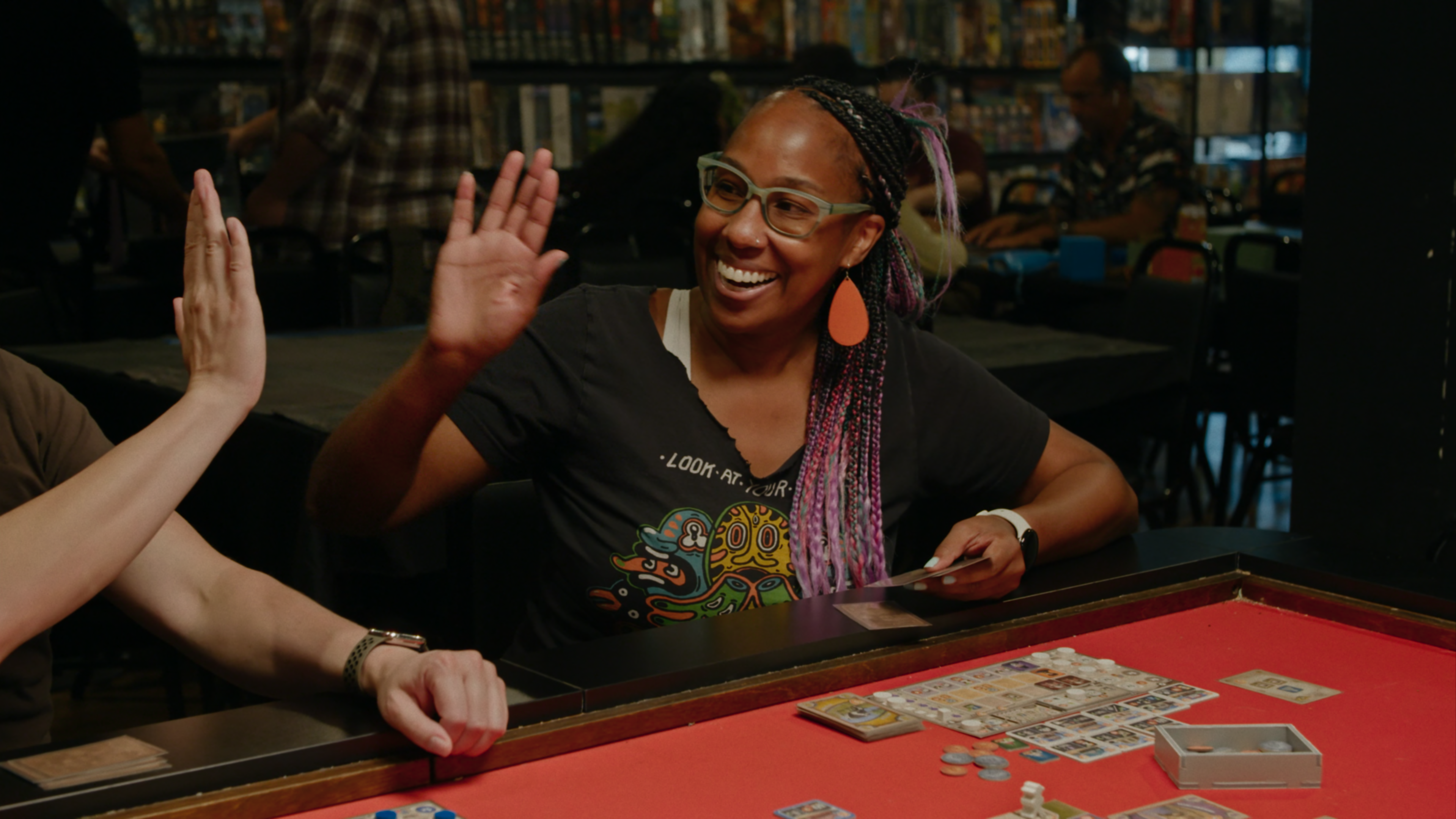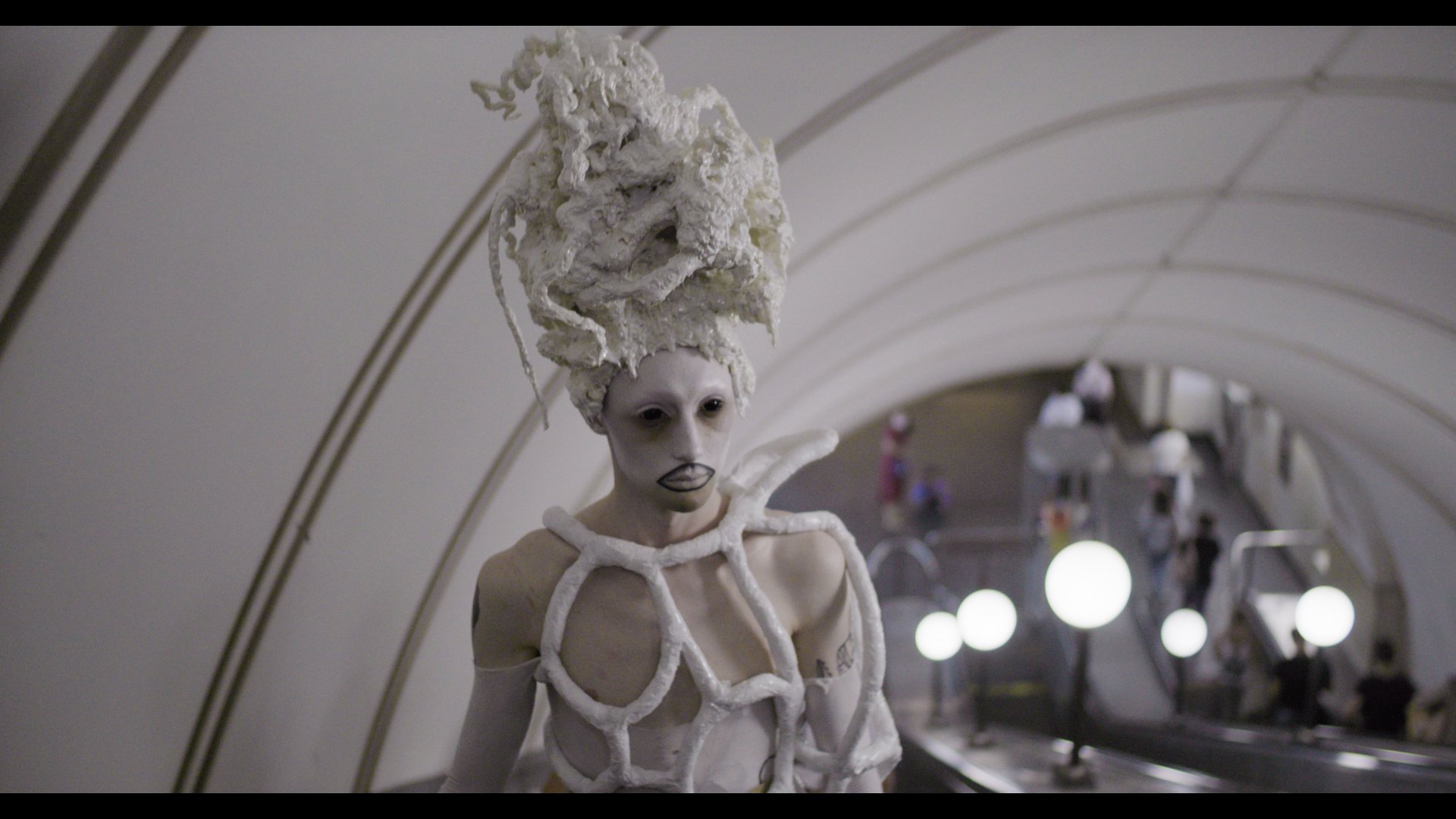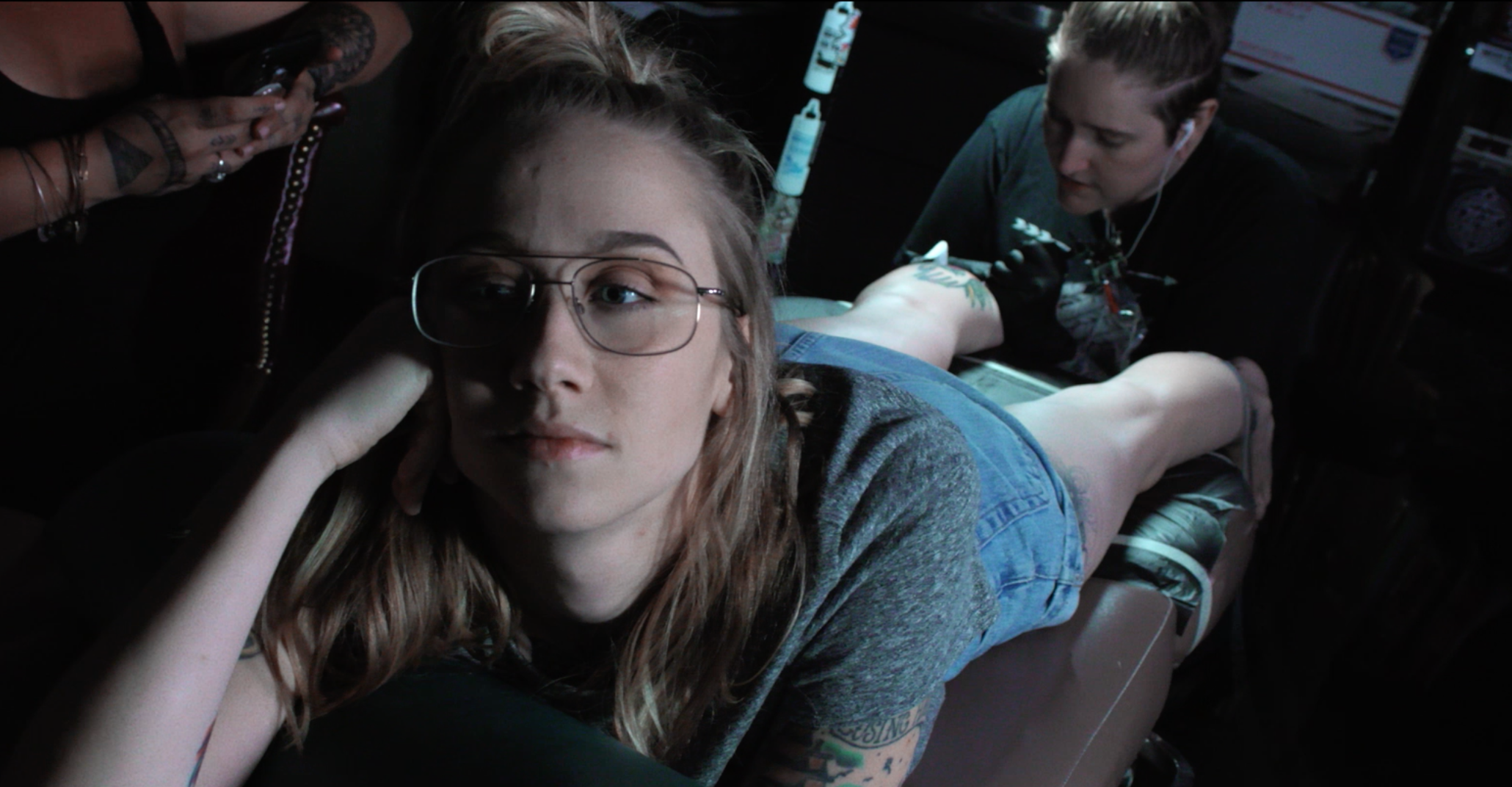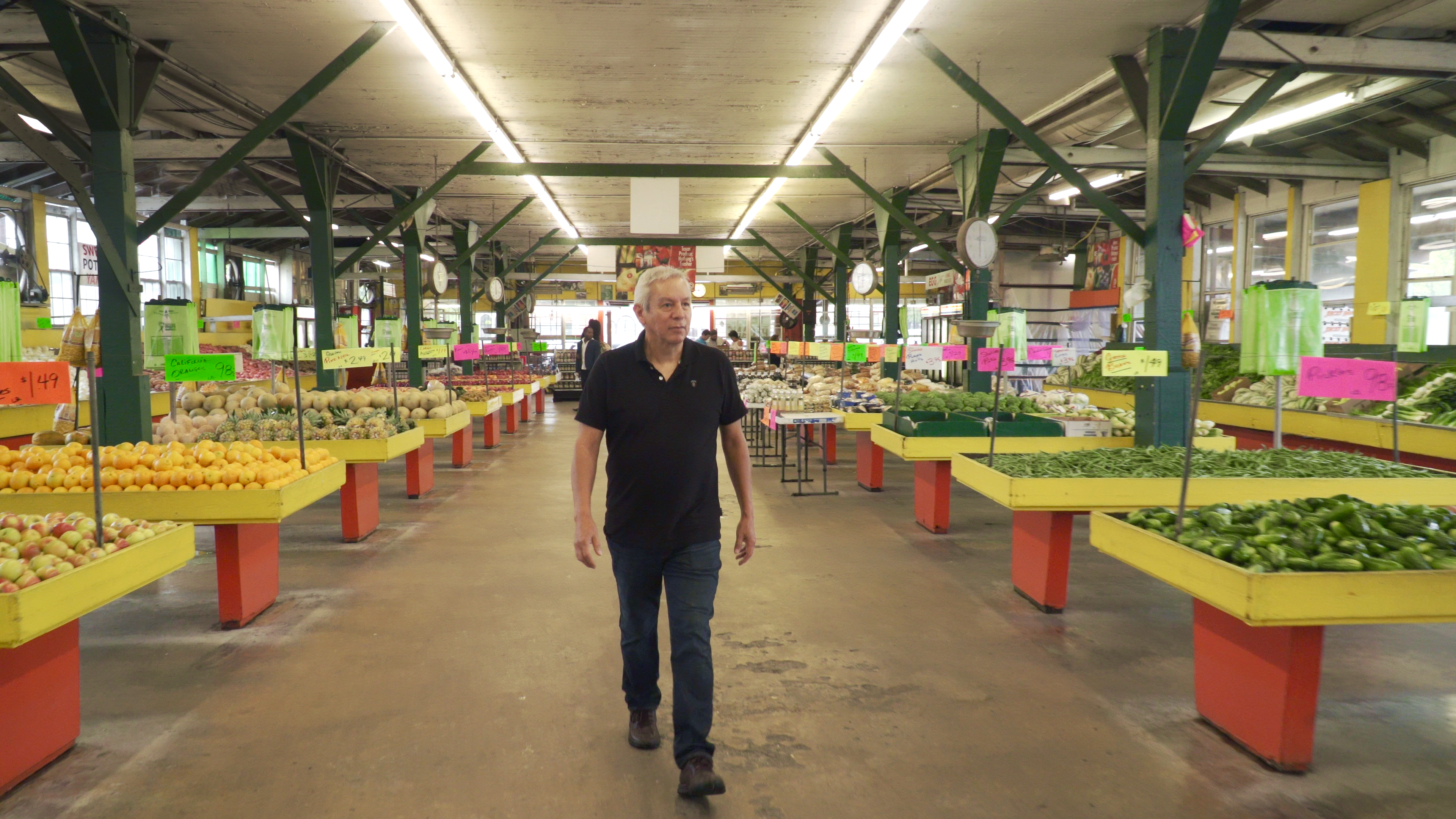
‘Truly Texas Mexican’ Bites Off More Than It Can Chew
A new food documentary fails to recognize the complexities of Indigenous identity in Texas.
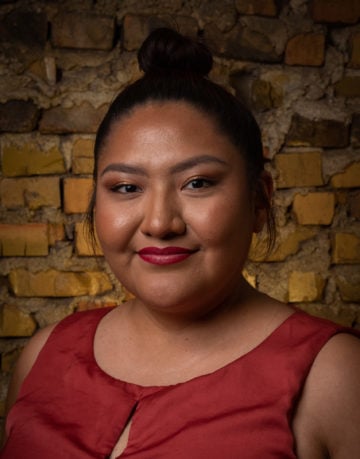
A version of this story ran in the March / April 2021 issue.
Above: Adán Medrano, chef, food writer, and filmmaker, walks through a local farmers’ market.
From the March/April 2021 issue.
Adán Medrano’s new documentary, Truly Texas Mexican, begins with a disclaimer: “This film may make you uncomfortable and it should.” For the next 90 minutes, Medrano, a graduate of the Culinary Institute of America, tells the story about his community’s food—a tradition that was never taught or explored when he was at the institute. Medrano identifies as being Chicano and Indigenous to Texas. Over the course of the film, which will premiere on March 21 on Amazon, Apple TV, and Google TV, Medrano adapts his 2014 cookbook of the same name by meeting with Mexican American, Tejano, Chicano, and Mestizo chefs in an attempt to find the Indigenous roots of Texas-Mexican food (not to be confused with Tex-Mex).
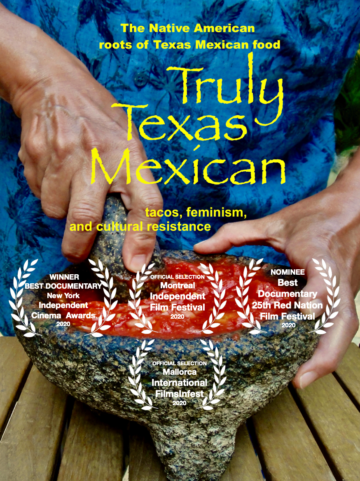
The chefs featured in the documentary are all women who are passionate about their craft. The audience is invited into their homes or small businesses and offered an intimate glimpse into their lives. One of the chefs, Rosalia Vargas, creates a chile colorado dish, mixing in rich red chiles with beef, salt, vinegar, sugar, and herbs. Her kitchen utensils are in constant motion as she stirs the chile and cooks the meat. When asked if she likes her dish, she says yes, with a laugh. Medrano takes a bite, and the enjoyment spreads across his face in a big smile. This reaction is a mainstay of the film.
The documentary begins by exploring the lives and legacies of the Chili Queens of San Antonio, who made the city a food destination as far back as the 1860s. The chefs sold traditional Texas-Mexican food out of food stands in downtown San Antonio. According to Medrano, the Chili Queens were eventually pushed out of the area because of racism and sexism and were replaced with restaurants that catered to white people, birthing what is now known as Tex-Mex, or what Medrano describes as “by Anglos, for Anglos,” eventually pleading: “Enough with the cheese already.” But Medrano also claims that the Chili Queens were Indigenous peoples making Indigenous food that would later become known as Texas-Mexican food.
The underlying theme of the film is how food is an important aspect of culture and identity, and it illustrates this by showing how recipes and cooking tools are passed from one generation to the next. Celeste DeLuna, an artist and chef, shows off her mother’s molcajete, a traditional Mexican mortar and pestle, and hand-embroidered dish towels. In another scene, Homero Vera, a rancher and publisher in Duval County, shows the molcajete he inherited from his family. But according to Medrano, the molcajete is more than just a cooking tool. It’s a metaphor. The blending of herbs represents the blending of Indigenous and Spanish cultures and the creation of an identity: To be Tejano, Chicano, or Mestizo is to be mixed. This is pointed out by Vera as he walks along an unidentified coast, rich with naturally occurring sea salt, which he says Indigenous people would come to collect to preserve meats.
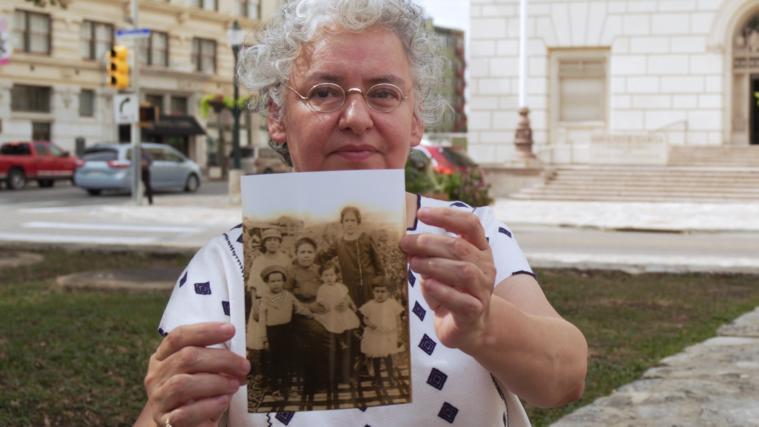
Truly Texas Mexican shows how food is an important part of culture but also illustrates how women are cultural carriers. For instance, Christine Ortega, Medrano’s niece, wanted to revive their family’s barbacoa recipe; the practice of using an underground oven to slow-cook a cow’s head wasn’t being done in her family anymore, so she took it on herself to relearn the practice. After much trial and error, she learned the process. Medrano shows her confidently instructing those around her on how to do it—even the men.
But beyond the delicious-looking food and the lite history lessons, the film is marketed as a documentary about the Native American roots of Texas-Mexican food, and Medrano makes an ambitious effort to link Tejano, Chicano, and Mestizo identities to Indigeneity through food. The link, however, is unclear. Medrano never makes an effort to recognize the complexities of Indigenous identity in the United States. The film proclaims that the chefs are Indigenous, by proxy, making the food Indigenous. Ultimately, this leads to more questions than answers, the most glaring being: What does it mean to be Indigenous to what is currently Texas?
When Truly Texas pivots to explore Indigenous identity in Texas, it’s marked by the introduction of flute music and the appearance of Isaac Alvarez Cardenas, from the Tap Pilam Coahuiltecan Nation, dressed in traditional regalia. It’s the first of many Indigenous tropes and stereotypes Medrano relies on to explain ideas of Native Texas, forcing his subjects to perform their Indigeneity on camera while others in the film are allowed to wear street clothes and generally be themselves. The brief cooking scene Cardenas appears in is short, and unexplained. A second subject, Larry Running Turtle Salazar, who claims to be Cherokee but is not enrolled, is also interviewed wearing traditional-style regalia and filmed praying to the six sacred directions with nary a plate of food or kitchen in sight.
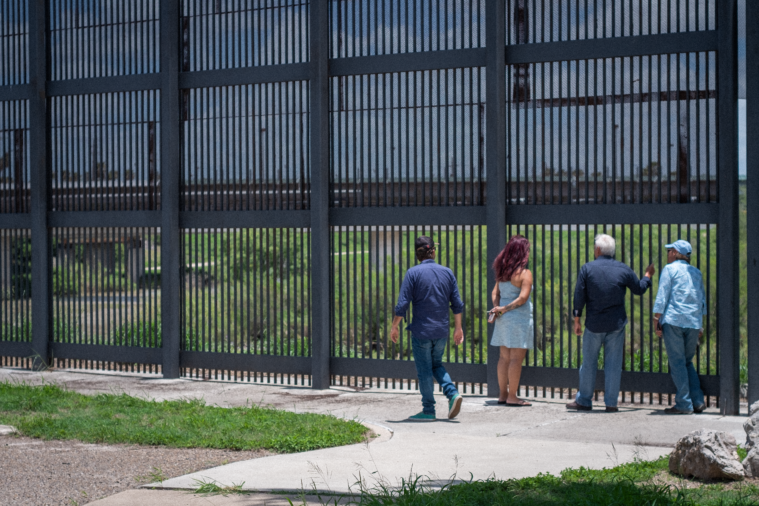
While the film does an admirable job acknowledging that Indigenous history in Texas is deeper than Spanish, French, Mexican, or American history in the region, Medrano is only able to detail this with the help of an archaeologist. The film even takes viewers to an archaeology site where Indigenous artifacts are being excavated, likely striking a painful chord for many Indigenous viewers whose heirlooms and exhumed relatives remain locked away in museums and personal collections.
“Native people in the state of Texas are the forgotten people,” says Larry Running Turtle Salazar in the film. “Period.” Ironically, the film continues that legacy by unendingly referring to Indigenous peoples, and identity, in the past tense and never once speaking to members of the many Indigenous communities who still call Texas home, including the Alabama-Coushatta Tribe, Ysleta Del Sur Pueblo, Lipan Apache, or Kickapoo Traditional Tribe, all of whom maintain strong ties to the land, culture, and food traditions.
Again, the question: What does it mean to be an Indigenous person in Texas? In Truly Texas Mexican, it’s a claim to ancestry, an identity only in the past tense. To be part of an Indigenous community is something different. Medrano says the film is a poem, and in many ways it is, but it is incomplete and lacks nuance about the complexities of Indigenous communities in Texas and, most especially, in the kitchen.
Indigenous Affairs stories are produced with support from the Economic Hardship Reporting Project.
Read more from the Observer:
-
ERCOT Is Refusing to Release Records On How it Prepared for the Winter Storm: The nonprofit corporation is asking Ken Paxton’s office for permission to ignore requests seeking information on the costliest winter storm in the state’s history.
-
Portraits of the Pandemic—Part Two: Last summer, we talked to nine Texans about their experiences with COVID-19. Now, we check back in with those folks—and hear from a few new ones—who have graciously shared their stories.
-
Industrial Facilities Released Millions of Pounds of Illegal Pollution During the Winter Storm: Many of them won’t face any consequences for the excess emissions that they pumped into the air, endangering the lives of communities downwind.
